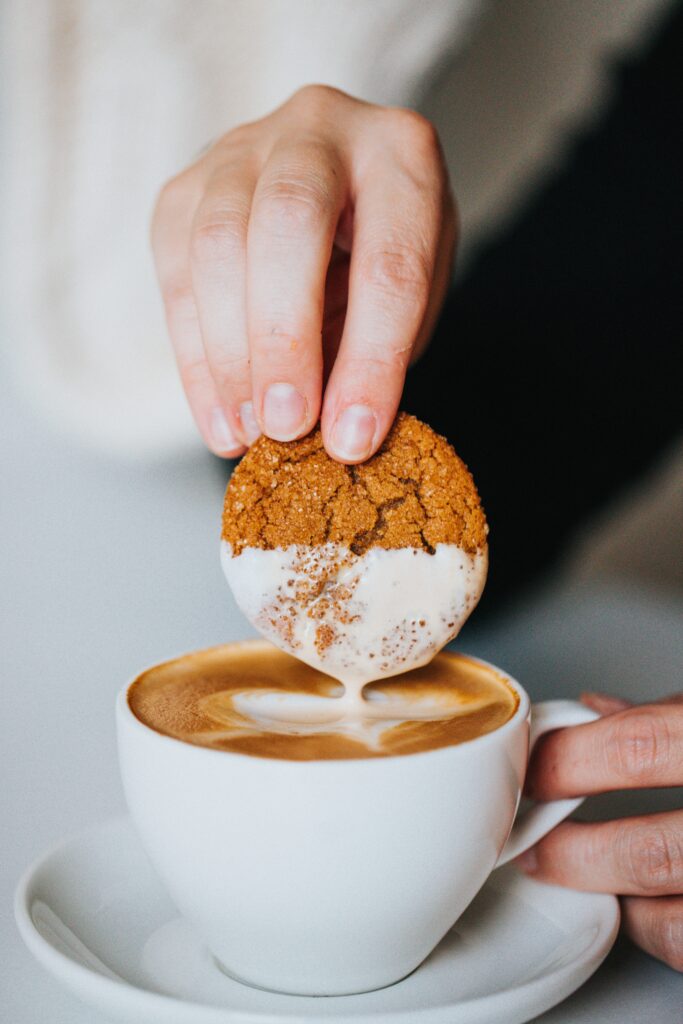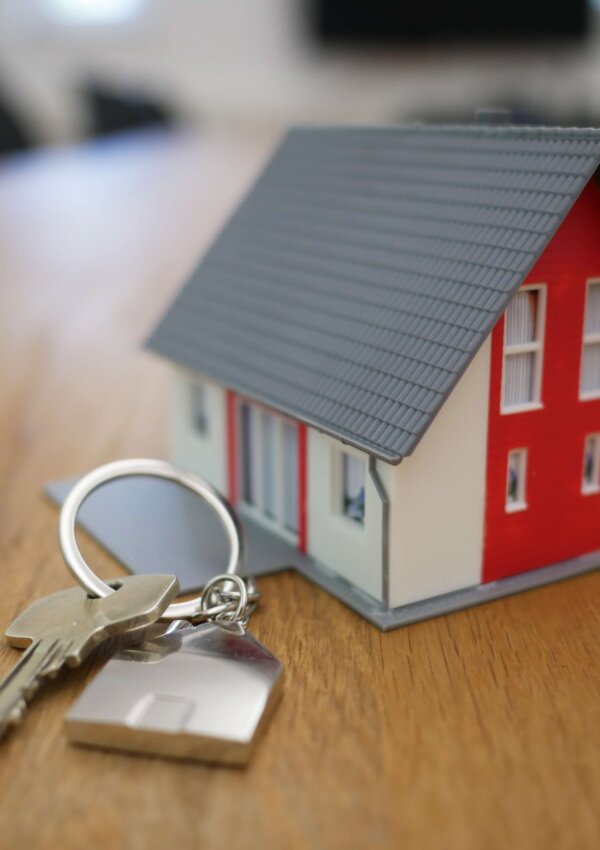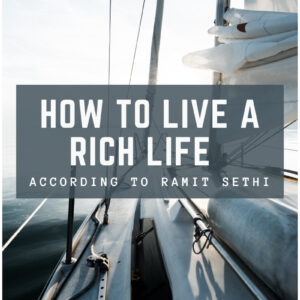Today we’re going to discuss why I buy $5 lattes. Expensive lattes are a constant target in the finance world. Usually, buying coffee every morning is used to demonstrate the concept of compound interest.
“If you invested that $25+ dollars a week into an XYZ investment fund, you’d have XYZ sum of money in 30+ years.”
For this reason, many financial gurus are totally against buying expensive coffees regularly. There are others, though, who make way for the little luxuries of life.
So who’s right?

Spending Well vs. Spending Out of Habit
I think the key to the latte debate is a question of routine. If something becomes a daily occurrence without being checked, you’re liable to go through life spending out of habit rather than being intentional and spending well. This is what I think most (not all) financial gurus who call out the morning coffee habit really mean.
Because honestly, if we don’t watch it, the $5 latte a day can easily become the $10+ lunch with coworkers. And the 40+ dinner for your family of four because you don’t really have any groceries at home anyway. That’s around $60 dollars a day on a weekday and we didn’t even talk about what your significant other and/or children had for lunch.
This routine is certainly on the higher side, but the principle is clear. Allowing luxuries like specialty coffee to become part of your everyday life can add up quickly and take a toll on your finances overall.
Spending is a Skill
Spending comes easy to some and hard to others. I’d argue that for all involved spending is a skill that can be honed.
Personally, I grew up very frugal and had issues with spending money. So much so that I’ve literally used birthday money I got as a kid from my grandparents to buy things as a fully grown adult. I struggled with being too intentional with my money. I’d overthink every purchase and usually decide against spending, even when it came to a necessity like food.
Not that this is a horrible thing to deal with, “Oh boo hoo, you couldn’t spend money…” but it goes to show that issues with spending are not one-size-fits-all.
I’ve certainly since grown out of this dilemma, but the journey to spend well is a constant one.
The formula that has worked well in my own personal finances includes:
- Tracking spending
- Budgeting the items that can be overspent on
- Keeping big-ticket bills low, e.g., mortgage/rent, vehicle costs, and food
- And allocating an amount of personal spending/allowance money
Having a spending plan that includes a healthy mix of necessities, little luxuries, and a future-minded goal, goes a long way to creating a decent personal finance position.
Why I Buy $5 Lattes
Now to the point.
You can find me enjoying a $5+ latte at an “overpriced” coffee shop for a few reasons.
Reason #1: A Budget that Allows for Little Luxuries
Budgets get a bad reputation for being restricting and no fun. In reality, budgets are freeing.
A budget (or spending plan) allows you to funnel your money where you want. It also allows you the freedom to spend the way you want without fear of stealing from your future self in terms of savings or retirement, or even a child’s college fund.
I can feel okay spending on a high-priced latte because I have an allocated amount of money that I can use however I like. And it just so happens that spending time at a coffee shop to do some writing is a main form of enjoyment for me.
Reason #2: The Concept of Checking Multiple Boxes
I buy $5 lattes because doing so checks multiple boxes in my life. This means the $5 value of my hard-earned net money isn’t just going to a hot vanilla latte. It’s also going toward paying rent to sit at a quaint location and get some work done. Or to have an excellent visit with a friend.
As a hybrid worker, I spend a lot of time working at my stand-up desk banging away at the keyboard alone in my office. Switching up my work environment usually gives me a fresh perspective. Mix that with the inevitable chatter and clank of coffee shops and the obvious dose of caffeine (which I no longer have every day) and you’ve got a recipe for a few hours of hyper-focused work.
In summary, that $5 latte goes towards:
1) renting an aesthetic office space
2) providing me with a little human interaction
3) stimulating my focus and effectiveness at least 3-fold.
Plus, coffee shops are the perfect meet-up spot for a visit with a friend.
Reason #4: Specialness and the Maximum Enjoyment Rule
Please understand, my allocated allowance is not an indefinite stream. It is an annual fixed amount unless otherwise adjusted. In this way, my budget forces me to limit the number of times I can afford a $5 latte. Now, could I order a latte 5 days a week if I wanted? Sure, but that would then mean I would have no more allocated money for anything else that I purely just wanted to do. No trips apart from the family travel fund, no nice dinners with friends, no new shoes, etc.
This dilemma (or rather, reality) brings me to reason #4. I buy $5 lattes when I know for a fact that the experience will check the maximum number of boxes and bring me a high level of enjoyment. Everyone’s enjoyment threshold is different, but for me, I enjoy a latte very much 4-6 times a month max. After that number, the novelty wears off and it becomes a little less special for me and therefore less likely for me to get in my car, make the trip to the coffee shop, and spend some time working or meeting up with a friend.
Why I Buy $5 Lattes, Reason #5: I Cut Costs in Other Ways
We’ve been spending some time discussing the granular reasons behind buying a $5 latte, but now let’s take a step back and look at things from a global perspective. Personal finances can be a tricky, incredibly nuanced, and hard to “get right” thing, but at the end of the day, personal finances come down to money in, to money out.
It’s that simple.
I can afford to budget for a little luxury like a latte because my overall money in, to money out, is accounted for and in the green. Here’s another way to think about buying $5 lattes using this perspective. In early 2022 I got off of daily caffeine. A decision that has unfortunately become somewhat of a personality trait for me… but it is a decision that does save my overall family budget money. Since I don’t consume the honey and milk and coffee every day that I used to, I have cut out some costs in our family grocery budget. Does this reward my personal allowance? No, but this works for me in two ways:
- The overall money-out in terms of our family grocery fund comes out ahead
- And the decision to have coffee every so often increases the specialness and enjoyment level of said coffee
This is a long-winded way of illustrating that cutting costs globally is a win, even if the cut costs don’t benefit the same budget.
Reason #6: I Buy $5 Lattes Because I Want To
It’s that simple. I’m free to do what I want with my allocated “personal” money. That’s what we call the amount of money we each get every year to spend however we like. A quick reference to that ‘spending is a skill’ concept, I’d argue that learning to spend well also includes learning how to use money as a tool AND a means of enjoyment.
Now you know what I have to say about the latte factor, as David Bach has coined it, let’s get into what they say. They, meaning some heavy-hitter financial gurus-types.
What They Say: Financial Gurus on Buying Lattes
Suze Orman is our first example. When asked about buying morning coffee, Suze said in a CNBC piece, “I would not insult myself by wasting money that way.”
Ouch.
You may read that and feel personally attacked, but to Orman’s point, if you put $100 a month in coffee expenses in a Roth IRA instead of consuming it, you could have $1 million in 40+ years (if the rate of return was 12%). Even if the rate was 7%, having $250,000 is a much better use of money according to her mindset. So while a harsh view, Suze’s approach is certainly something to be considered. And can be a wake-up call to cut costs allocated to luxuries and across the board to enable investing.
*Roth IRA Average Return*
Now there are obviously nuances to a statement like Suze’s. The average Roth IRA return is another topic that demands an in-depth look, but a quick Google search says the average return is anywhere between 6% – 10% (based on decades of data), but of course, there is also the obligatory disclaimer that there is no guarantee that the return will stay the same in future decades. Invest at your own risk, but in the same breath, don’t invest at your own risk, am I right?
Living a Rich Life
And then there are other finance gurus like Ramit Sethi who are of the mind that if a specialty $5 and even $7 latte is your happy place, you should make a way in your finances to have one (or 7) each week. He calls this concept living a rich life, which is an approach that essentially includes buying luxuries and cutting costs mercilessly in other areas that matter less to you.
So, Who’s Right?
The ‘skip the $5 latte’ advice is one of the most common tropes in the personal finance world and for good reason. What other daily nonessential habit costs $100+ a month that is shared by most people? Coffee. Coffee is the most commonly used drug. And despite many considering the daily act of coffee similar to the cost of brushing one’s teeth, it is still not the cheapest of habits and at the end of the day a luxury in comparison to hygiene, food, water, and shelter.
As far as who’s right on the matter. I’d say there is value in both Suze and Ramit’s perspectives. Personally, I took Suze’s approach for most of my life, using coffee gift cards to instead buy food on trips, etc., but I have since moved on to take on Ramit’s approach, allowing the little luxuries while cutting and being staunchly disciplined in other areas.
So the answer is: it depends. As annoyingly uncertain as that statement is, personal finances are too personal a thing to completely standardize in a one-size-fits-all way.




